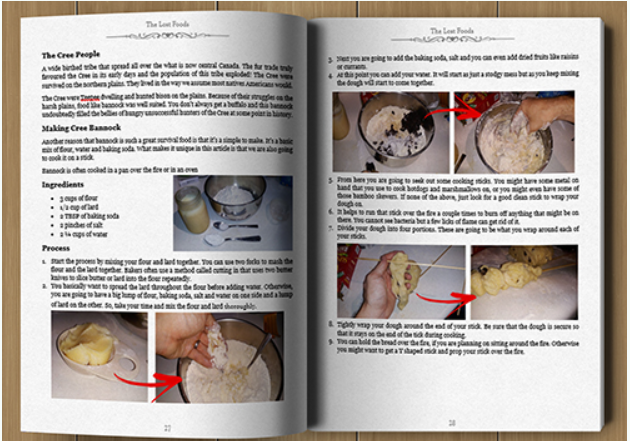
The Lost SuperFoods is a practical and informative guide that revives age-old food preservation techniques and forgotten recipes. Authored by Claude Davis, the book is designed to help readers create shelf-stable foods that require no refrigeration and can last for years. With a focus on survival, preparedness, and self-reliance, this book appeals to preppers, homesteaders, and anyone interested in building a secure food supply using proven historical methods.
The central promise of the book is to empower readers to prepare over 126 recipes that can help sustain individuals or families during emergencies such as natural disasters, food shortages, or long-term grid failures.
Content and Structure of The Lost SuperFoods
The book is well-organized and visually accessible. Each recipe or food preservation method is presented in its own section, complete with historical context, ingredients, step-by-step instructions, and vivid color photographs. This makes the book approachable even for beginners with little or no experience in survival cooking or food storage.
The layout is intuitive, breaking down each method in a clear, concise manner. Recipes are tailored for long shelf life and focus on ingredients that are easy to source, inexpensive, and nutritious.
Key Recipes and Features of The Lost SuperFoods
Several standout recipes and techniques showcase the practical and historical value of the book:
- Doomsday Ration: A Cold War-era food bar designed to last decades and provide essential calories during emergencies.
- Leningrad Superfood: Inspired by the siege of Leningrad during World War II, this recipe focuses on ingredients that provide sustenance under the harshest conditions.
- Great Depression Superfood: A simple, calorie-dense dish that helped Americans get through economic hardship with minimal resources.
- Shelf-Stable Breads and Protein-Rich Stews: These recipes are designed to be filling and require minimal storage or cooking infrastructure.
All of these recipes prioritize shelf life, nutritional value, and ease of preparation. Most ingredients are dry, preserved, or cured, and the methods lean heavily on techniques like dehydration, fermentation, and vacuum sealing.
What Makes It Stand Out
Historical Insight: Each recipe is backed by a story or historical account, giving readers not just instructions, but also a deeper understanding of the resilience and ingenuity of previous generations.
Self-Sufficiency: The book promotes independence from grocery stores and supply chains, encouraging readers to rely on time-tested methods.
Easy-to-Follow Format: Clear instructions and photos make the process less intimidating for those new to food preservation.
Focus on Nutrition: The meals are calorie-dense and rich in essential nutrients—important for any long-term emergency food strategy.
Potential Drawbacks
Despite its value, the book does come with a few considerations:
- Time and Effort: Many recipes require a significant amount of prep time, particularly for those unfamiliar with scratch cooking or food storage techniques. You’ll also need some basic kitchen tools and materials for sealing or drying food.
- Storage Space: Preparing large batches for long-term storage will require a cool, dry place to store containers, jars, or vacuum-sealed bags.
- Supplementary Skills Needed: While the book provides excellent instructions, some preservation methods (such as curing meat or fermenting vegetables) may require additional research or practice to master safely.
Target Audience
This book is ideal for:
- Preppers and survivalists building a long-term food cache
- Homesteaders and off-grid families
- Campers and hikers seeking lightweight, nutritious food options
- Anyone interested in self-reliance, food security, or traditional skills
Whether you’re preparing for a worst-case scenario or just want to be less dependent on the grocery store, The Lost SuperFoods has something to offer.
Conclusion
The Lost SuperFoods is a compelling and practical guide that delivers on its promise to teach readers how to prepare survival food that lasts for years without refrigeration. Claude Davis effectively combines historical wisdom with modern practicality, creating a book that is both educational and actionable.
The blend of real-world usability and historical anecdotes makes this more than just a cookbook—it’s a manual for self-reliance. While some effort and learning are required to implement the methods fully, the payoff is a sense of preparedness and independence that is increasingly relevant in uncertain times.
If you’re looking for a comprehensive, easy-to-follow guide on how to stockpile nutritious, shelf-stable food using traditional methods, The Lost SuperFoods is well worth considering.


